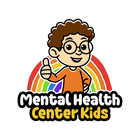|
Key Takeaways:
- Major depressive disorder manifests as persistent sadness and affects children with certain illnesses, a traumatic upbringing, or who have experienced adverse life events.
- Major depressive disorder is treatable with medication, psychotherapy, and family therapy.
- Parents can support children who have major depressive disorder by talking about it, reading books, and practicing healthy habits.
|
All kids go through ups and downs, but major depressive disorder in children can be overwhelming and disruptive to their daily lives. As a parent, watching your child experience major depression can be disheartening, but there are many options to help them get better.
Learn how major depressive disorder manifests in children and what you can do to provide them with the best possible support.
What is Major Depressive Disorder in Children?
Major depressive disorder (MDD) in children is characterized by persistent feelings of sadness, irritation, and hopelessness. These symptoms can affect how children interact with peers, perform in school, and function in the home.
Children with depression may also experience sleep troubles, such as being unable to sleep or sleeping too much [*]. They might also withdraw from people and activities that once brought them happiness.
How Common is Major Depressive Disorder in Children?
Major depressive disorder occurs in about 2% of young children and 5% of adolescents [*]. It most commonly occurs after puberty, with children being likely to experience it again within six to 12 months if the condition goes untreated.
MDD is more likely to recur in children who display severe symptoms or have multiple episodes more frequently. How long major depression lasts varies across children, but untreated episodes can last between 6 and 12 months [*].
Causes and Risk Factors of Major Depressive Disorder in Children
While there is no singular cause of MDD in children, genetics and environmental factors can significantly impact the likelihood of a child developing it. A child might start showing symptoms of MDD as a result of the following:
- A physical or terminal illness
- Exposure to substance use
-
Bullying or peer pressure
- Biological relatives with MDD
- Stressful life events like a death in the family, divorce, or moving away
Risk factors that might also contribute to a child’s likelihood of developing MDD include:
- A history of depression or other coinciding disorders, such as anxiety, body dysmorphia, or conduct issues
- Adverse childhood experiences (ACEs)
- Family conflicts
- Being part of the LGBTQIA+ community
- A problematic medical history involving low birth weight, brain injuries, or a chronic illness
- Puberty or problems with friends
- Experiences with neglect or abuse
Symptoms of Major Depressive Disorder in Children
MDD symptoms in children often occur gradually and can be challenging to notice. These symptoms may also differ from those you see in adults. Below are major depression criteria that may indicate your child has the condition:
Physical Symptoms
- Trouble sleeping, oversleeping, or getting poor-quality sleep
- Eating more or less than usual
- Low energy levels, chronic fatigue, and constant tiredness
- Restlessness or physical agitation
- Slowed movements and slurred speech
Emotional Symptoms
- Mood swings and changes, such as your child seeming more irritable or frustrated than usual
- Frequent crying or heightened sensitivity
- Excessive guilt, feelings of worthlessness, or a desire to die
- Negative self-talk, a pessimistic view of life, and low self-esteem
Behavioral Symptoms
- A lack of interest in activities they’ve previously enjoyed
- Difficulty maintaining meaningful relationships with others
- Declining academic performance or lack of interest in school
- Increased sensitivities to rejection and failure
Diagnosing Major Depressive Disorder in Children
Healthcare providers like your child’s pediatrician can recommend a testing facility to determine whether your child has MDD. Your pediatrician will refer you to a mental health professional, who will facilitate a detailed evaluation of your child’s condition.
First, they will rule out conditions potentially causing your child’s MDD, including:
- Anemia
- Mononucleosis
- Epilepsy
- Chronic pain
- Concussion
- Hypo or hyperthyroidism
Ruling out these medical conditions can provide insight into why your child may experience the symptoms listed above. Some conditions, such as vitamin D or B12 deficiencies and hypothyroidism can cause symptoms like fatigue and low moods, which may manifest similarly to MDD.
By ruling out other medical conditions first, your child’s healthcare provider can ensure a more accurate diagnosis of MDD.
If your child’s doctor determines that a physical illness doesn’t cause the child’s condition, they may run more tests, such as personality tests and surveys. They may also interview parents, caregivers, teachers, and other family members to get the full scope of what the child is experiencing.
Treating Major Depressive Disorder in Children
While not in itself “curable,” major depressive disorder in children is among the most treatable conditions. The two primary ways to treat MDD in children are talk therapy and medication. Take a closer look.
Medication
When using medication to treat MDD, doctors or child psychiatrists will typically prescribe antidepressants called selective serotonin reuptake inhibitors (SSRIs). SSRIs increase the serotonin the brain produces and increase feelings of happiness and well-being [*].
Common SSRIs that psychiatrists prescribe to children with MDD include:
- Fluoxetine
- Sertraline
- Paroxetine
Like any medication, SSRIs might cause side effects like appetite changes, drowsiness, headaches, tremors, and an upset stomach. Always pay attention to changes your child might experience if their prescriber adjusts their dose or medication.
The medications can become effective in four to six weeks, though their effects vary from person to person.
Psychotherapy
Cognitive-behavioral therapy (CBT) is a highly effective talk-based treatment that helps children develop a more positive mindset about themselves and their environment. Through CBT, children with MDD learn to challenge assumptions and beliefs, replace them with healthier ways of thinking, and develop coping skills.
This time-limited treatment occurs weekly over several months, with therapists recommending a program of at least 12 to 20 weeks.
Dialectic behavior therapy (DBT) is another option for treating MDD. DBT focuses on teaching children skills to manage their emotions and imparts mindfulness techniques for distress tolerance.
Family Therapy
Family therapy can be effective in treating MDD in children as it improves the family’s overall functioning and communication. Through family therapy, each member can express their concerns and take a collaborative approach toward finding a reasonable solution.
Family members can also understand how their words and actions affect one another and develop more respectful ways of expressing themselves.
How Can Parents and Caregivers Support a Child with Major Depressive Disorder?
While you can’t prevent your child from developing major depressive disorder, there are many ways you can support them, such as:
-
Talking to your child: A simple conversation about your child’s feelings and experiences can go a long way in their healing process. Listen actively, ask questions, and encourage them to be open about their thoughts. Young children may not understand why they’re chronically sad but find that talking about it can provide a sense of relief.
-
Encourage positive habits: Children with MDD sometimes neglect their self-care. Encourage them to return to positive habits, such as exercising, eating nutritious meals, and staying hygienic. Offer to do some of these things with them and start small—take short walks around the block, brush your teeth, and cook meals together.
-
Provide your child with literature: Reading about major depression can reassure children that their experiences are valid and affect other children, too. If your child is already in therapy, you can introduce concepts by providing CBT books.
-
Connect them with a child therapist: Explore local resources to discover a child therapist who is a good fit for your child. Talk with your child’s pediatrician, school counselor, or health insurance provider to obtain referrals to a child therapist in your area.
The Bottom Line
Major depression in children can cause interpersonal and psychosocial problems but is treatable through a combination of medication and talk therapy. If you believe your child might have MDD, it’s important to seek help early.
Explore our CBT worksheets or DBT worksheets for parents seeking additional resources for MDD. You can use them alongside your child’s therapy program.
Sources:
- Fang H, Tu S, Sheng J, Shao A. “Depression in sleep disturbance: A review on a bidirectional relationship, mechanisms and treatment.” Journal of Cellular and Molecular Medicine, 2019.
- Elia J. “Depressive Disorders in Children and Adolescents.” MSD Manual Professional Edition, 2023.
- Bains N, Abdijadid S. “Major Depressive Disorder.” Nih.gov, 2023.
- Wang L, Wang R, Liu L, Qiao D, Baldwin DS, Hou R. “Effects of SSRIs on peripheral inflammatory markers in patients with major depressive disorder: A systematic review and meta-analysis.” Brain Behavior and Immunity, 2019.





















































